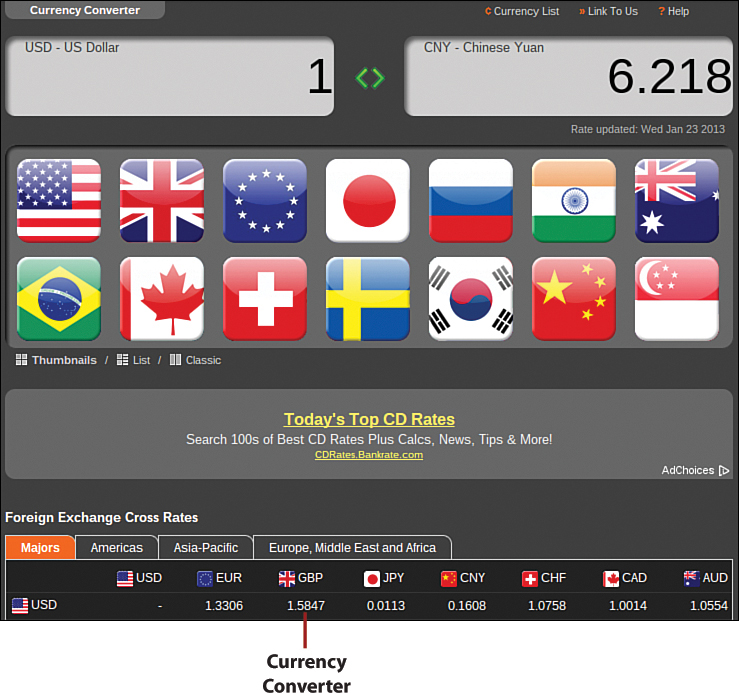11. Using Chrome Apps and Extensions
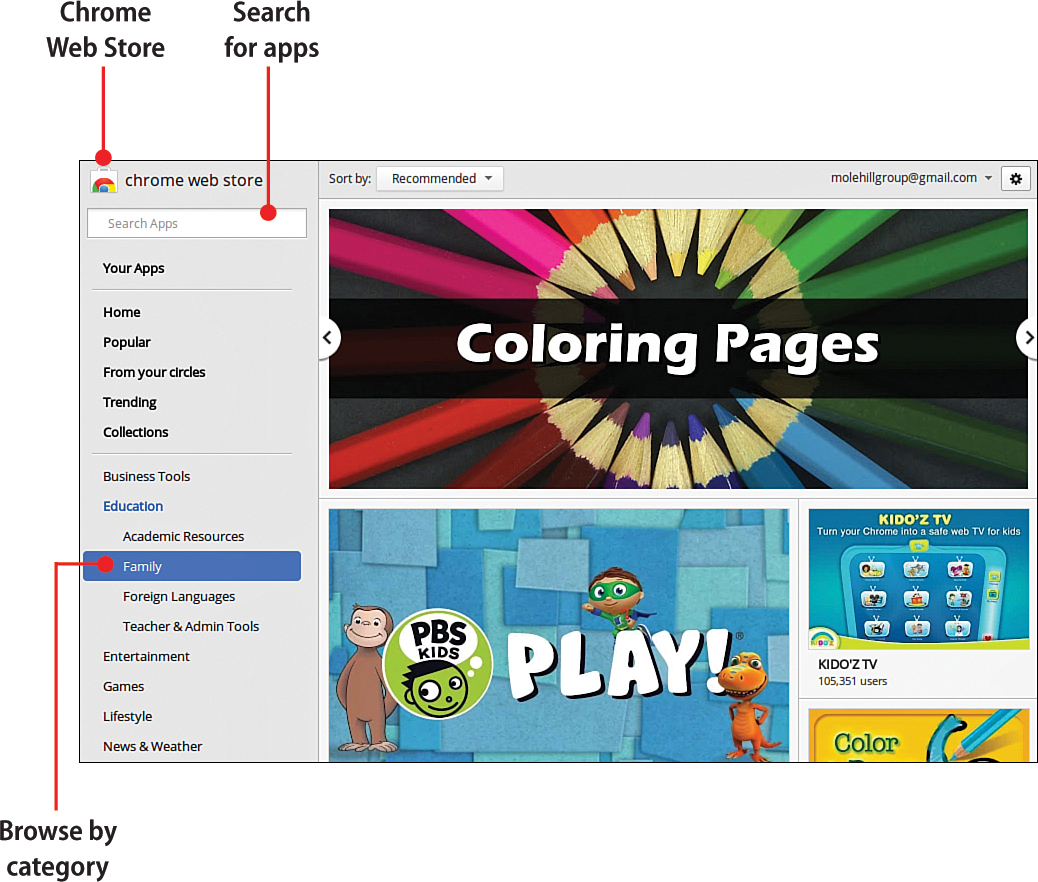
In this chapter, you discover how to add functionality to your Chromebook with Chrome apps and extensions.
→ Getting to Know the Chrome Web Store
→ Installing and Launching Apps
→ Examining Chrome Apps—by Category
→ Installing and Using Extensions
If you have an iPhone or Android phone, you’re used to the concept of apps—small, single-purpose applications that you run with the touch of a button. Well, there are apps available for your Chromebook, as well as a Chrome Web Store, to find the apps you want. In addition, the Chrome Web Store offers a number of useful extensions that plug right into the Chrome browser and add extra functionality to your online experience.
Understanding Chrome Apps
A Chrome app is, as the name implies, an application that you run in Google Chrome—a web-based application, to be precise. In fact, Chrome apps are actually advanced interactive websites; when you run an app, you access that website and the functionality offered there. The app runs entirely within the Chrome browser.
For example, the app called Google Calendar is a web-based calendar and scheduling application. You access the app from Google Chrome, and it looks and acts like a regular application, but the app itself is hosted on Google’s website, as is all your personal calendar and appointment data.
That said, Google ensures that Chrome apps look and act like the apps on your smartphone, and are always available to you, no matter what computer you’re using. Find an app you like, and you can run it on your Chromebook as well as within the Chrome browser on a Windows or Mac PC.
Here’s something else: Apps are always up to date. When you run an app, you’re running the current version offered by that website. No time-consuming (or costly) updates or upgrades are necessary.
On your Chromebook, you easily access your apps by clicking Apps on the Launcher. This displays the Apps panel, which hosts 16 apps per page. Click the bars at the bottom of the pane to display the next page of apps, or use the Search box to search for a specific app. Click any app to launch it in a browser window or tab.
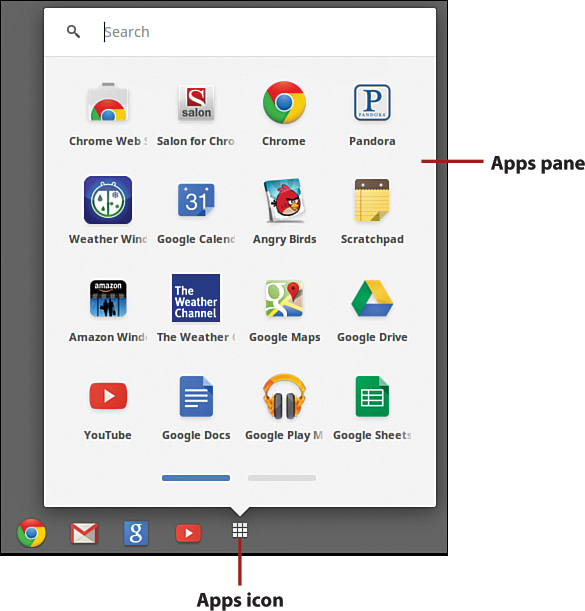
What kinds of Chrome apps are available? The list is long, and includes apps for listening to music, doing office work, editing photos, and even playing games. You can find a large selection of apps—most of them you can freely download—in the Google’s Chrome Web Store.
Getting to Know the Chrome Web Store
The Chrome Web Store is an online marketplace, hosted by Google, where you can browse and download thousands of different apps, extensions, and themes for Google Chrome. To visit the Chrome Web Store, click the Web Store icon on Chrome’s New Tab page, or go directly to chrome.google.com/webstore/.
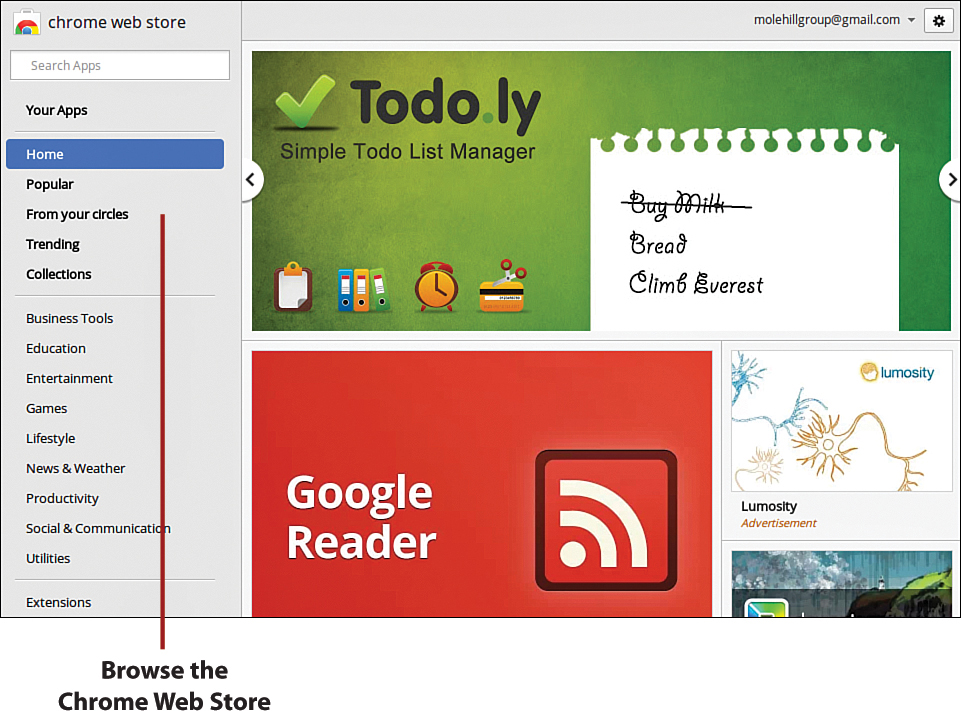
Some of the items in the Chrome Web Store are developed by Google, others by various third-party developers. Most of these apps, extensions, and themes can run on any Chromebook; others can run on any Windows or Mac computer within the Chrome web browser.
Within the Chrome Web Store, you can browse for items by category, or search for items using the top-of-page search box. Each item in the Web Store has its own information page, where you can read more about the item, contribute your own rating and review, and download the item to your Chromebook.
Virtually all extensions and themes in the Chrome Web Store are free, as are most apps, but there are some apps that cost money to download. Other apps are free to download, but support in-app payments; that is, you might have to pay more in the future to continue using the app, or to activate enhanced functionality.
Installing and Launching Apps
As previously noted, you can find a large number of Chrome apps in the Chrome Web Store. Just open the Chrome browser and go to chrome.google.com/webstore/, or click Apps in the Launcher and then click Chrome Web Store.
Download and Install Apps
Chrome Apps are organized in the Chrome Web Store by category—Business Tools, Education, Entertainment, Games, Lifestyle, News & Weather, Productivity, Social & Communication, and Utilities. You can also display the most Popular apps, apps From Your Google+ Circle, Trending apps, and specific Collections of apps.
1. Click the Apps icon on the Launcher.
2. Click Chrome Web Store. The Chrome Web Store opens in the Chrome browser.

3. Click a category in the left sidebar to display a list of related subcategories; click the subcategory you want, and all the apps within the subcategory display.
4. By default, the apps are sorted by Recommended; click the Sort By list at the top of the page to instead sort by Popular, Trending, or Rating.
5. To learn more about a specific app, click it.
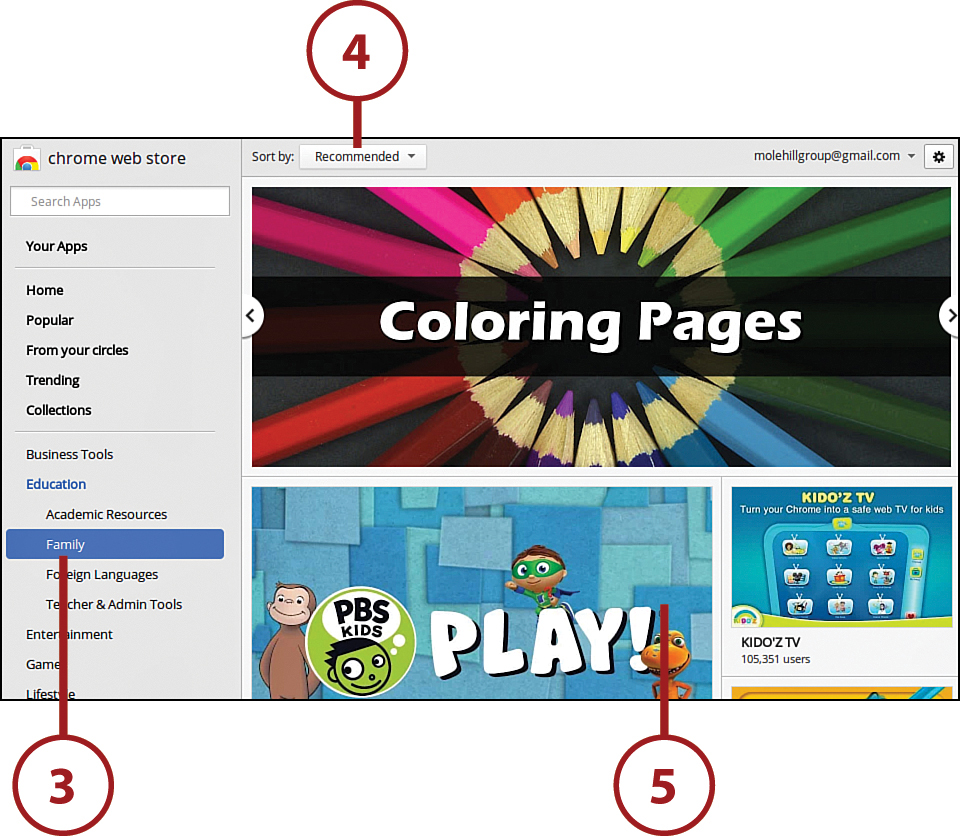
6. The Overview tab displays by default; click the Details tab to view more specifics, or the Reviews tab to see what others say about this app.
7. Click the Add to Chrome button at the top of the page to install the app.
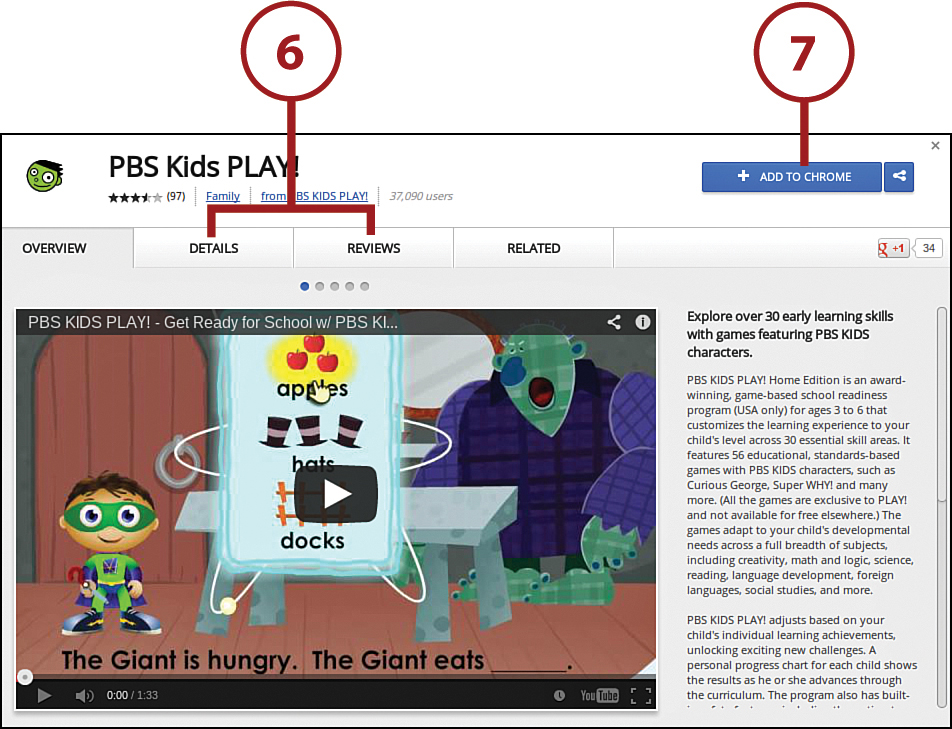
8. Click the Add button to confirm the installation.
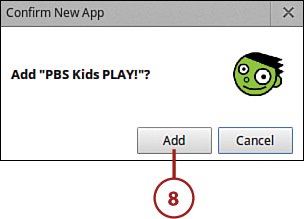
Launch Chrome Apps
After you install a Chrome app, it appears on the Apps pane that displays when you click Apps in the Chrome Launcher.
1. Click the Apps icon on the Launcher
2. Click the icon for the app you want to open.

Using Chrome Apps
Like traditional desktop applications, every Chrome app is different, and works in its own unique fashion. Creating a document in Google Docs, for example, is much different from reading posts in TweetDeck or playing Angry Birds. You’ll need to get to know each app you install to learn its proper usage.
Managing Installed Apps
Chrome makes it easy to manage the apps you’ve installed. In fact, because an app is really just a link to a web page, there’s really nothing concrete to uninstall—although you can configure how apps are launched
Configure App Options
Some Chrome apps have their own configuration options. For example, Google Docs lets you configure how items are opened and updated, among other settings. Those items with configuration options display an Options item when you right-click their icons in the Apps panel.
1. Click the Apps icon on the Launcher.
2. Right-click (two-finger tap) the item to configure and select Options.
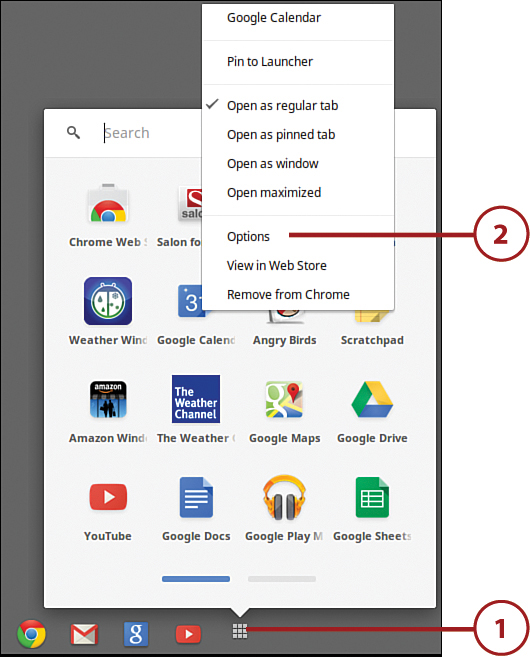
3. When the options panel for that item opens, make the appropriate settings.
Uninstall Apps
If you find you’re not using a given app, you can remove the link to that app from the Apps panel.
1. Click the Apps icon on the Launcher.
2. Right-click the item to delete and select Remove from Chrome.
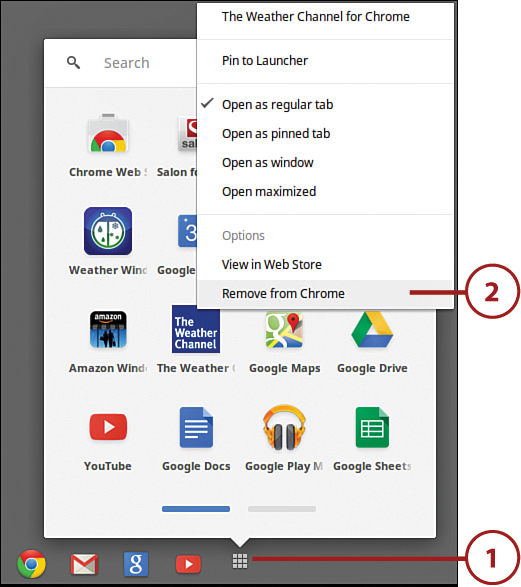
3. When asked to confirm the uninstallation, click the Remove button.
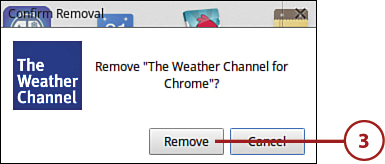
Determine How Apps Are Launched
By default, all Chrome apps open in a regular tab in the Chrome browser. You can change this launch behavior, however, and opt to have any given app open as follows:
• Open as a regular tab—This is the default option.
• Open as a pinned tab—This automatically opens a tab for the app whenever you start your Chromebook; the tab for the app is always there in the Chrome browser. (Pinned apps have smaller tabs than regular tabs, and always appear first on the row of tabs; plus, they can’t be closed.)
• Open as Window—This opens a new window for the app when you launch it.
• Open maximized—This launches the app in full-screen mode—actually, as a normal tab but viewed full screen.
You can select launch options for any app installed on your Chromebook.
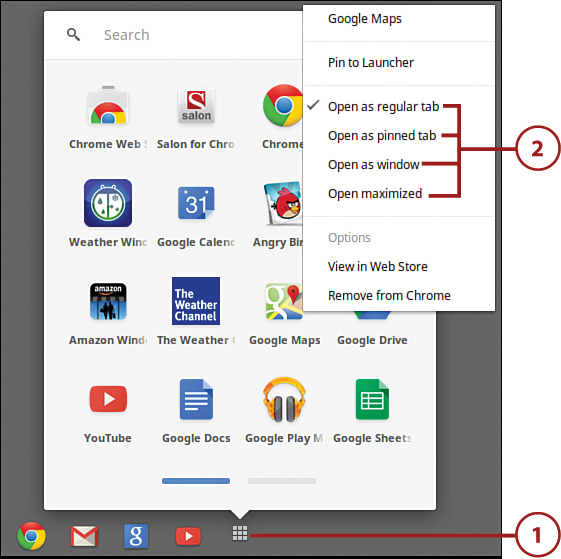
1. Click the Apps icon on the Launcher.
2. Right-click the item and select from one of the Open options.
Examining Chrome Apps—by Category
What kinds of Chrome apps are available? It’s a comprehensive list, much like one of traditional software applications.
Business Tools
Google offers business-related apps in four major subcategories: Accounting & Finance; HR, Legal & Logistics; Marketing & Analytics; and Sales & CRM. Some of the more popular of these apps include the following:
HR and CRM
HR stands for human resources. CRM stands for customer relations management.
• Cash Organizer—Manage your personal and family finances.
• Currency Converter—Converts any currency to any other currency.
• Financial Calculator—Includes mortgage, loan term, loan amount, interest, and other calculators.
• SEO SERP Workbench—Monitor your website’s search engine placements across multiple search engines.
• Sprout Social—Social media management tools.
• W2MO—Modeling, 3D simulation and animation, and workforce planning.
• Zoho CRM—Customer relations management.
Education
The Chrome Apps Store offers a number of apps with educational value for students of all ages. The Education category is organized into four major subcategories: Academic Resources, Family, Foreign Languages, and Teacher & Admin Tools. Most, but not all, of these educational apps are free. The most popular include the following:
• 3D Solar System Web—Explore the solar system with 3D models.
• Biodigital Human—Explore the body with 3D models.
• Daum Equation Editor—Online scientific equation creation and editing.
• Kido’z TV—Turns your browser into a safe viewing platform for your kids.
• Learn French/Italian/Spanish/Portuguese/Hebrew/etc—A series of popular language tutors.
• Planetarium—An interactive sky map for exploring stars and planets.
• Thesaurus—As the title says, an online thesaurus.
• Typing Test and Type Fu—Two popular typing tutors.
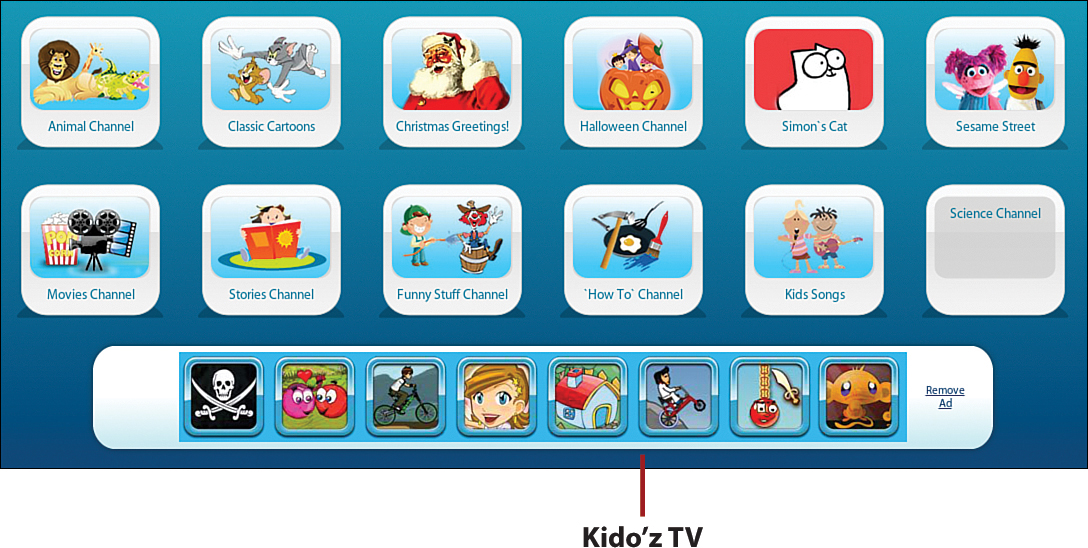
Entertainment Apps
Your Chromebook is actually a pretty decent little entertainment device—especially with the right apps installed. The Entertainment section in the Chrome Web Store is divided into the following major subcategories: Books, Music & Radio, Online Video, Photos, and TV & Movies. Here are some of the more popular apps in this section:
• Audiotool—A powerful online music production studio, for making your own kind of music.
• BeFunky Photo Editor—Photo editing and special effects.
• Google Play Books—Choose from more than 4 million books to read online.
• Google Play Music—Google’s music storage/streaming service.
• Internet TV—Watch Internet TV from around the world, online.
• Kindle Cloud Reader—Read ebooks on your Chromebook from Amazon’s Kindle store.
• Marvel Comics—Digital versions of poplar Marvel comic books, including Spider-Man, Iron Man, Thor, Captain America, and the X-Men.
• Pandora—Streaming music from one of the web’s largest music libraries.
• Picasa—Access to Google’s Picasa Web Albums.
• PicMonkey—Advanced photo editing.
• Psykopaint—Creates interesting art from existing digital photos.
• Webcam Toy—Take photos from your Chromebook’s webcam and apply more than 70 fun effects.
• YouTube—A front end to Google’s popular video sharing site.

Games
Let’s face it; most people spend a lot of time playing games on their computers. Your Chromebook is no exception, which is why you can find lots of fun (and addictive) games in the Chrome Web Store, organized into the following subcategories: Arcade & Action, Board & Card, Puzzle & Brain, Role-Playing & Strategy, Sports Games, and Virtual Worlds.
The following are some of the most popular games in the Chrome Web Store:
• Angry Birds—Of course, today’s most popular online game is available for Chrome. If you haven’t played it yet, go ahead—everybody else is. (This game has more than 10 million users from the Chrome Web Store.)
• Bejeweled—Popular gem-swapping strategy game.
• Cargo Bridge—All about building bridges.
• Contract Killer—Popular shooter upper.
• Crazy Rollercoaster—Construct your own rollercoaster—and then ride it.
• Cut the Rope—An award-winning all-ages game.
• Entanglement—Physics-based game that challenges you to create the longest path possible.
• Gun Bros—A first-person shooter.
• Isoball 3—Challenging puzzle games.
• Little Alchemy—Create awesome things with selected elements.
• Plants vs. Zombies—Award-winning game that has you defending your home from zombies, using an arsenal of zombie-zapping plants.
• Poppit—A Tetris-like balloon popping game for all ages.
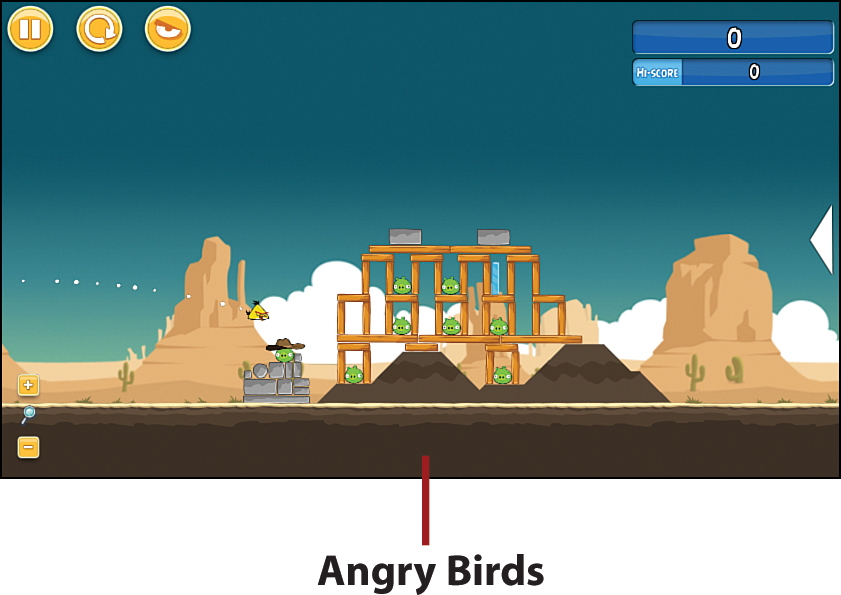
Lifestyle Apps
The Chrome Web Store offers all sorts of apps that match your busy lifestyle, organized into the following categories: Astrology, Food & Health, Money, Religion, Shopping, and Travel. The most popular include the following:
• BBC GoodFood—A recipes app, with more than 260 healthy (and free) recipes.
• Bible—An online app for reading, listening to, and sharing the Bible.
• eBay Web App—Manage your eBay auctions from within Chrome.
• Gojee—Fashion and food reporting.
• Google Finance—Financial news, stock quotes, performance charts, and more.
• Mint—Web-based financial management.
• Personal Trainer—Exercises and workout routines.
• TouristEye Planner—Plan your trip online.
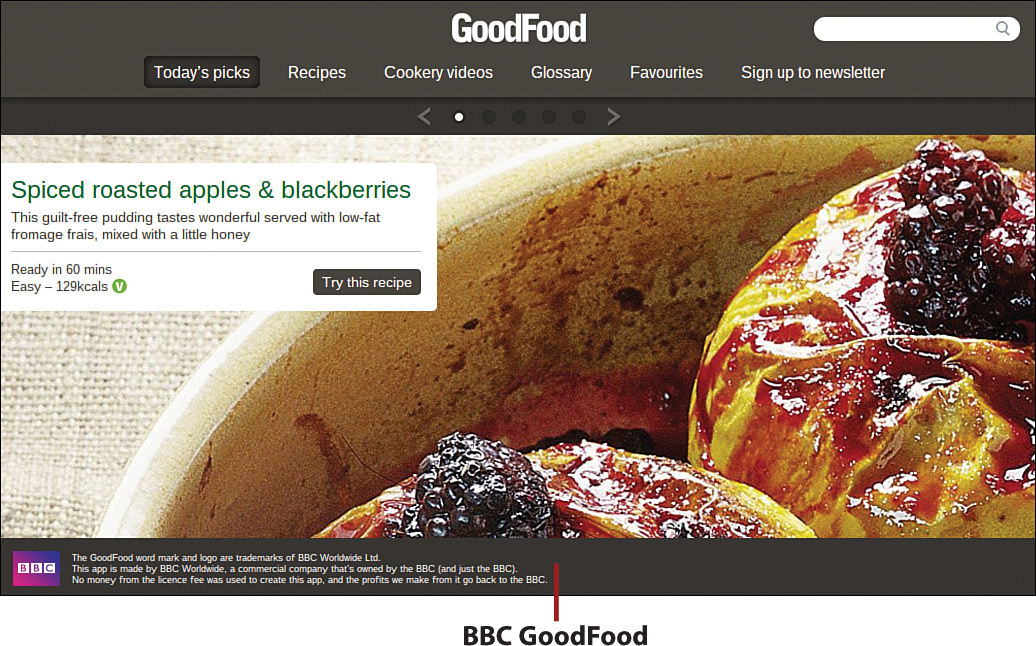
News & Weather Apps
There’s lots of news on the Web; use the apps in this category to find it. The Chrome Web Store offers apps in the following subcategories: News Reporting, Social News, Sports, and Weather Forecasts, the most popular of which include
• Full Screen Weather—More weather conditions and forecasts, from the Weather Underground.
• Google News—A front end to Google’s online news headlines.
• Google Reader—Online RSS newsreader.
• New York Times—A specialized app for reading the Times within the Chrome browser.
• The Weather Channel for Chrome—Forecasts, radar, and current conditions for up to nine locations, from the folks at The Weather Channel.
• Weather Window by WeatherBug—A cool, graphical way to view current weather conditions—in a virtual window in your Chrome browser.
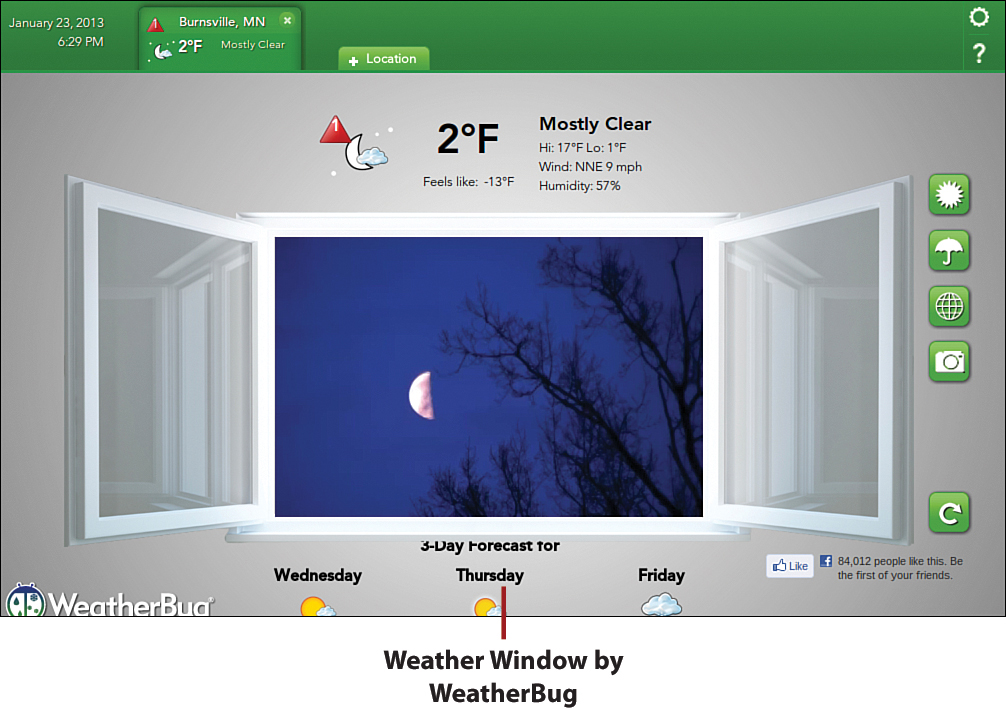
Productivity Apps
As far as Google is concerned, productivity apps include Creative Tools, Developer Tools, Office Applications, Search & Browsing Tools, and Task Management. The most popular of these productivity apps include the following:
• Audodesk Homestyler—Plan your own home remodeling projects.
• Dropbox—Store and share your files online with this service that competes with Google Drive.
• Google Calendar—Another popular Google app, for keeping schedules and appointments.
• Google Drive—The front-end to Google’s online file storage service.
• Google Maps—Online maps and directions.
• Google Search—A front-end to Google’s online search engine.
• Microsoft Hotmail—Microsoft’s popular web-based email service.
• My Chrome Theme—Create and share your own Google Chrome themes.
• Pixlr-o-matic—Convert your digital photos into cool-looking retro pics.
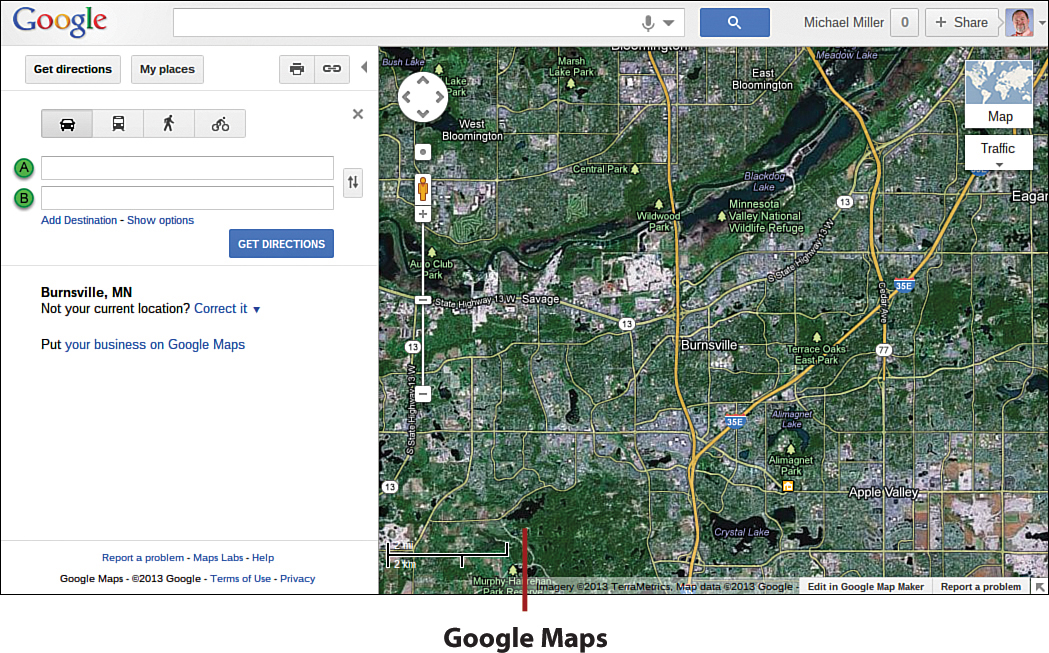
Social & Communication Apps
Social networking is a big deal; you never want to be away from your Twitter or Facebook feeds. To that end, Google offers apps in the following social and communication subcategories: Blogging, Chat & IM, Email & Contacts, Phone & SMS, and Social Networking.
Here are the most popular of these apps:
• Gmail Offline—Enables you to read and create Gmail email messages, even when your Chromebook isn’t connected to the Internet.
• Google+—A front-end to Google’s new social network.
• imo messenger—Chat with your friends on Skype, Facebook, Yahoo! Messenger, AIM, Google Talk, and other popular instant messaging services.
• persona—Enables you to read your Facebook and Twitter feeds in a single app.
• TweetDeck—From Twitter, a front-end to manage communications across multiple social networks.
• WordPress—Manage and post to your WordPress blogs.
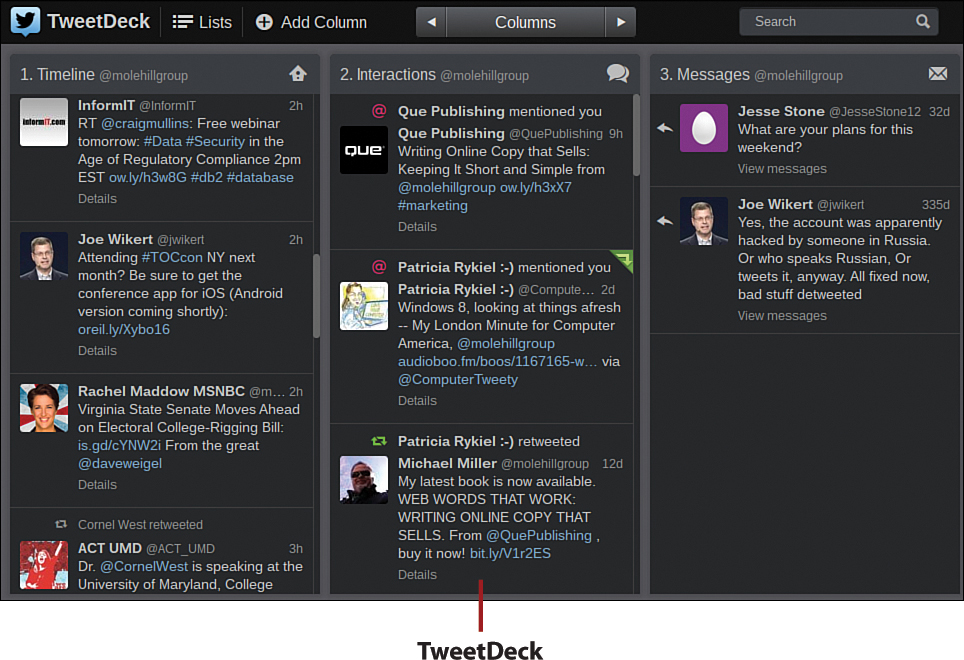
Utilities
Whatever we haven’t yet covered probably falls into the Utilities category, and the following subcategories: Alarms & Clocks, Bookmarks, Calculators, Dictionaries, and Notepads. Here are some of the more popular utility apps in the Chrome Web Store:
• Calculator. Popular scientific calculator.
• Digital Clock—Customizable onscreen clock.
• Evernote Web—Award-winning note taking/sharing app.
• Numerics Calculator & Converter—Powerful Chrome-based calculator and converter.
• QR Code Generator—Create your own QR (quick reference) codes.
• QuickNote—Take notes from within the Chrome browser.
• Springpad—Create and share topic-focused notebooks.
• Sticky Notes—More onscreen notes for Chrome.
• Stopwatch—An easy-to-use online stopwatch.
• World Clocks—Interactive analog and digital clocks from more than 400 cities worldwide.
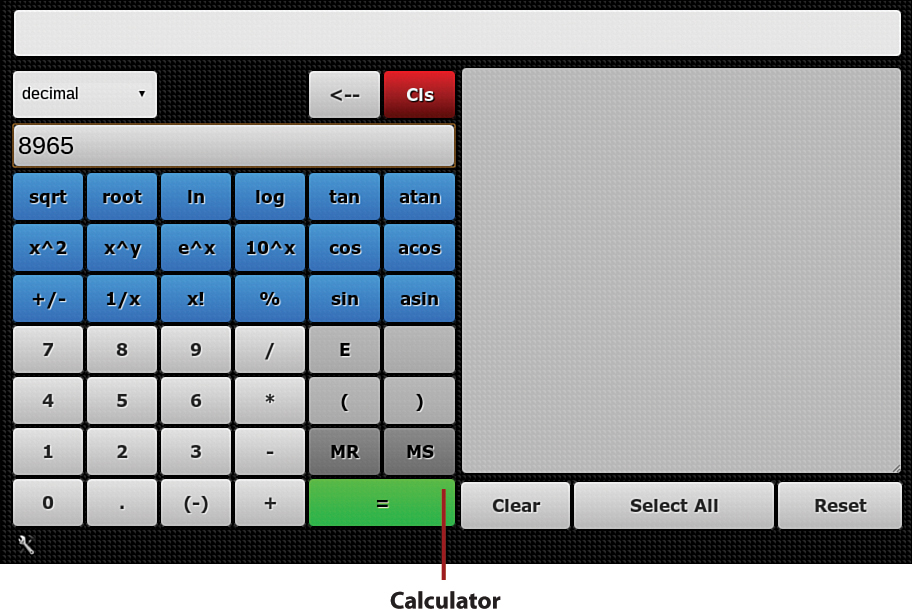
Installing and Using Chrome Extensions
Google Chrome is an interesting operating system in that Google encourages outside developers to add increased functionality. This is done via the use of extensions that install within Chrome and enable you to perform specific tasks.
For example, you can add Chrome extensions to block web page ads, display how many unread messages you have in your Gmail inbox, view status updates on Facebook or Twitter, view dictionary definitions, and capture screenshots of web pages. There are thousands of these extensions available, and they’re all free.
You can find Chrome extensions in the Chrome Web Store; just scroll down and click Extensions in the left sidebar. From there, you can use the top-of-page Search box to search for specific extensions by keyword, or browse available extensions.
Free Extensions
You can download all the extensions in the Chrome Web Store for free.
Download and Install Extensions
Extensions are organized in the Chrome Web Store by category—Accessibility, Blogging, By Google, Developer Tools, Fun, News & Weather, Photos, Productivity, Search Tools, Shopping, Social & Communication, and Sports. You download and install extensions the same way you do Chrome apps.
1. From within the Chrome Web Store, scroll down and click Extensions in the left sidebar.
2. Click a category to view extensions of that type.
3. Click an extension to learn more.
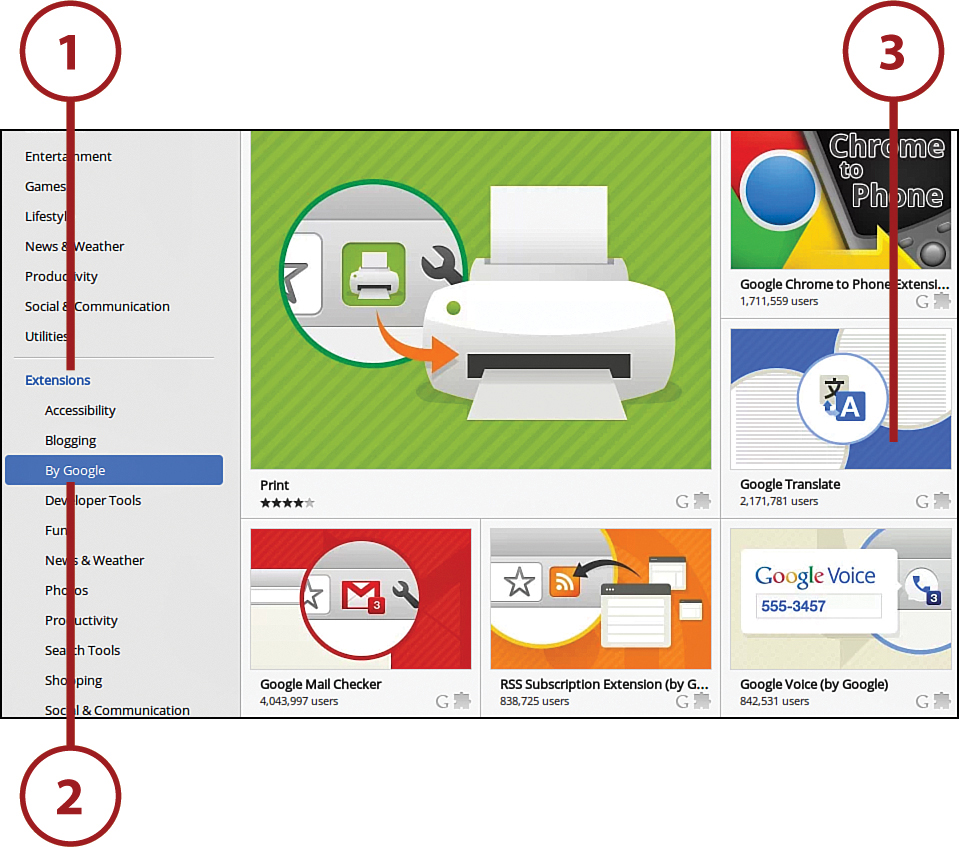
4. Read about the extension and then click the Add to Chrome button if you decide to install.

5. When asked to confirm the new extension, click the Add button.
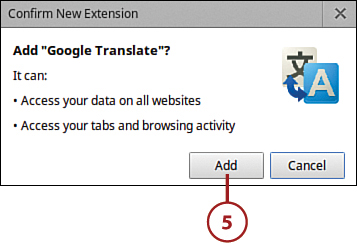
Use Extensions
How do you use Chrome extensions? It all depends; every extension is different, although many tend to install some sort of access button next to Chrome’s Address box.
For example, the YoWindow Weather extension installs a new button next to the Chrome Omnibox; this button displays the current weather and temperature. When you click the YoWindow Weather button, the extension displays an information pane with your current weather conditions and forecast.
You also get a new button installed when you download the Cloudy Calculator extension. Click this button and you see a scrolling calculator window, with an input field at the bottom. Enter your equation into the input field, press Enter, and the Cloudy Calculator calculates the answer for you.
Obviously, other extensions work differently, but you get the picture. Add as many extensions as you like to add functionality to Chrome and your Chromebook.
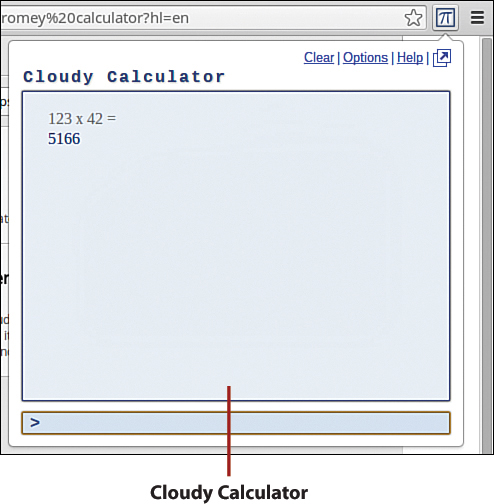
Manage Chrome Extensions
Some extensions can be configured for your personal use. For example, weather-related extensions typically need your location information to display local conditions and forecasts. You can also opt to run a given extension in Chrome’s Incognito anonymous browsing mode.
1. Open the Chrome browser and click the Customize and Control button to display the drop-down menu.
2. Select More Tools, Extensions to open a page that lists all the extensions you’ve downloaded.
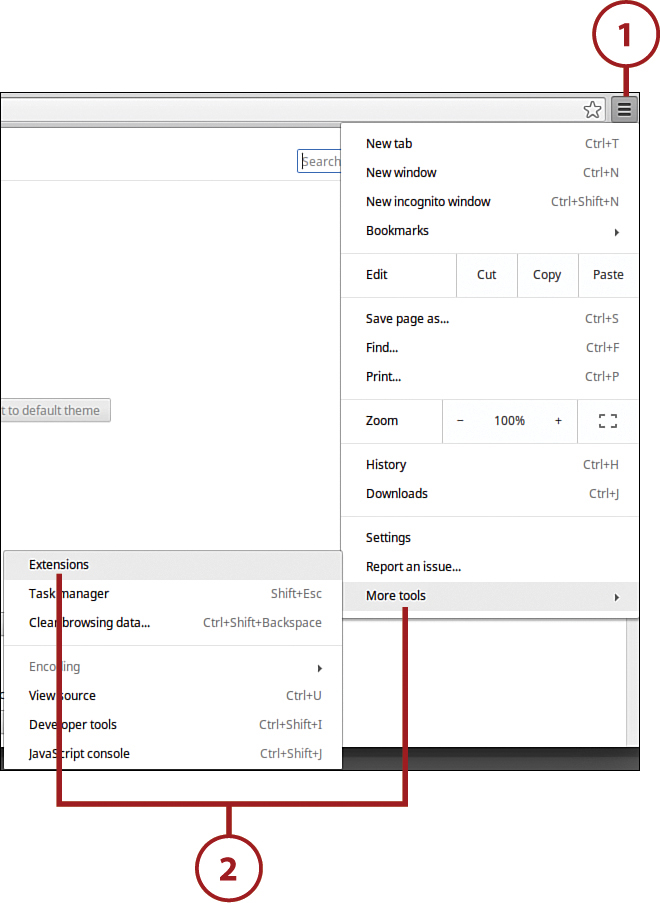
3. Check the Allow in Incognito box if you want the extension to be available when browsing in Incognito mode.
4. If an extension has configurable options, it displays an Options link next to the Allow in Incognito item; click this link to configure the option. (Not all extensions have configurable options.)
5. Uncheck the Enabled box for an extension to disable it.
6. Click the Remove from Chrome (trashcan) icon for an extension to totally delete the extension from your Chromebook.
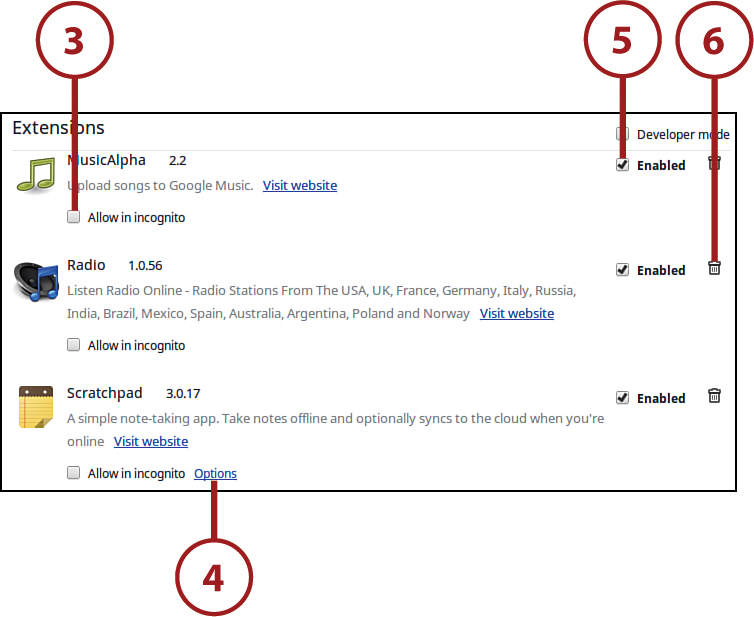
Enabling Disabled Extensions
You can later enable any extension you’ve disabled by returning to the Extensions page and clicking Enable for that extension. You cannot undelete a deleted extension; if you want it back, you need to reinstall it from the Chrome Web Store.

